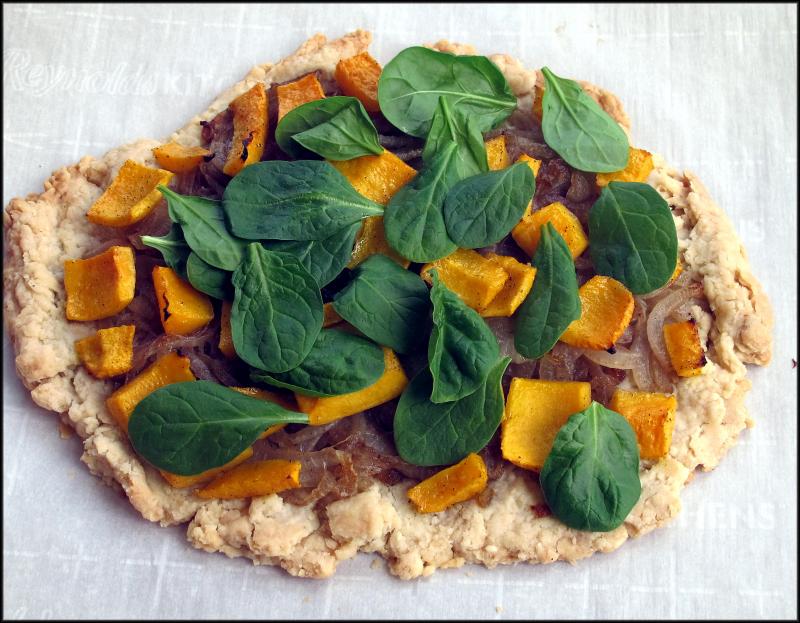Baking science can be the key to successful results
A few weeks ago, the Lewes Public Library and Browseabout Books hosted another episode in their Cooks and Books series. For this one, we spoke with blogger and cookbook author Dikla Levy Frances. Dee got her start sharing food photos and recipes on her blog, One Sarcastic Baker. That led to her extensive research into the science of baking and recent publication of her book, “Baking Science.”
When asked to define what she means by the term “baking science,” the author shared a sports team analogy. Just as the coach knows the strengths of each player, how to take advantage of their unique qualities and how to combine different players to achieve specific results, so too does a baker who follows the molecular science inherent in ingredients and techniques.
We’ve all seen cookbooks organized by the type of dish (appetizer, soups, etc.) or by ingredient (pork, beef, vegetables), or by the season of the year (cool and easy meals in the summer, hale and hearty foods for winter). This book is organized quite differently, starting with the first chapter, titled Why is Water the Most Essential (and Underappreciated) Ingredient in Baking?
Her analysis gives the reader an understanding of the many ways water works with other ingredients in a recipe, noting that even flour has between 7 and 14 percent water content. Her first recipe is for Orange Cream Cheese Cake, in which she provides examples of how water helps with leavening, incorporates flavor, creates tenderness and elasticity, and keeps baked goods from burning.
The following sections of the book focus on the rationale behind selecting various ingredients, dividing them into stabilizers (flour, eggs, starch), tenderizers (butter, oil, acid and leaveners) and transformers (temperatures). She ends the book with a set of foolproof formulas and recipes for beautiful baked goods, including a cake that can be made with what you already have on hand in your pantry.
I was fascinated by the look of her Butternut Squash-Caramelized Onion Galette and decided to try to make it. I read through the instructions to discover the crust needed to spend time in the refrigerator, so I assembled it and let it rest overnight. The change in the recipe from a “standard” pie crust was the addition of potato starch to help build structure and stabilize the dough.
If you look at the photo of my galette (please don’t blame the photographer), you might not be inclined to try the recipe. I clearly did something wrong. Perhaps I didn’t roll out the dough thin enough or maybe I had an anemic squash (her slices of squash were bright orange, not sad yellow). The final flaw was to replace the arugula with baby spinach as a topping. Although it tasted fine, I obviously messed up the science.
One of the questions Dee answered during the conversation was about how to measure ingredients, which I should have considered, as it may have been the source of my problem with the galette dough. She stated that a scale is the most important tool in a baker’s kitchen. It doesn’t take up much space and will make the difference between success and failure. If you scoop out the flour with a measuring cup, you have more than likely packed in far more than you need by weight.
I’ve included the galette recipe and one for a chai-flavored cake topped with cream cheese frosting that I plan to bake just as soon as I buy myself a kitchen scale.
Butternut Squash Galette*
1 1/2 C (188 g) flour
3 T (21 g) potato starch
1/8 t baking powder
1/4 t salt
1/2 C (114 g) chilled butter
1T (15 ml) apple cider vinegar
4 - 5 T ice water
3 T olive oil
2 sliced onions
1/2 t cinnamon
2 C 1/2-inch pieces butternut squash
salt & pepper
1 C baby arugula
Sift together the flour, starch, baking powder and salt into the bowl of a food processor. Pulse 3 times for 2 seconds each. Cut butter into half-inch pieces and add to the bowl. Pulse until butter is the size of peas, about 8 times. Add vinegar and 4 T ice water; pulse until the mixture resembles coarse sand, about 5 times. Pinch a bit of dough between your fingers; if it doesn’t come together, add additional 1 T ice water. Place the dough on a clean surface and press into a circle. Seal in a plastic bag and refrigerate for at least 2 hours, up to 3 days. When ready to bake, preheat oven to 400 F. Line a cookie sheet with parchment paper; set aside. Heat 2 T olive oil in a skillet over medium. Add onion and cook until golden, stirring often, about 25 minutes. Sprinkle with cinnamon and stir to combine. Toss squash with 1 T olive oil and sprinkle with salt and pepper; set aside. Roll the dough into a 14-inch circle and place on the parchment-lined pan. Spread onion in a layer, leaving 2 inches from the edge. Scatter butternut squash. Fold the edges toward the center. Bake until golden, about 45 minutes. Allow to cool slightly before sprinkling with arugula. *Adapted from “Baking Science.”
Chai Cake*
2 C (250 g) flour
1 t baking powder
1/2 t baking soda
1 t cinnamon
1/2 t ginger
1/4 t cardamom
1/4 t cloves
1 C (240 ml) unsweetened applesauce
1 T (15 ml) vanilla
1 C (220 g) dark brown sugar
2 eggs
1 egg yolk
1 C (240 ml) vegetable oil
Preheat oven to 350 F. Grease the bottom of an 8-inch round pan and cover with parchment paper; set aside. Sift together flour, baking powder, baking soda and spices in a bowl; set aside. In a small bowl, whisk together applesauce and vanilla; set aside. In the bowl of a stand mixer fitted with the paddle attachment, beat the brown sugar and eggs on medium until well combined, about 4 minutes. Slowly add oil and beat until fully incorporated. Add the dry ingredients alternately with the applesauce in three portions. Pour batter into the prepared pan and bake until a cake tester comes out clean, about 45 minutes. Allow cake to cool for 10 minutes before removing from pan. When cooled completely, spread top with cream cheese frosting. *Adapted from “Baking Science.”
Cream Cheese Frosting*
1 C (232 g) full fat cream cheese
2 T (28 g) unsalted butter
1 C (120 g) powdered sugar
1 t orange zest
1/4 C (60 ml) heavy cream
Beat cream cheese and butter until smooth. Gradually add the sugar, mixing after each addition. Add orange zest and cream. Whip mixture on high until smooth and spreadable. *Adapted from “Baking Science.”
Send comments, questions and recipe suggestions to capeflavors@comcast.net.

























































